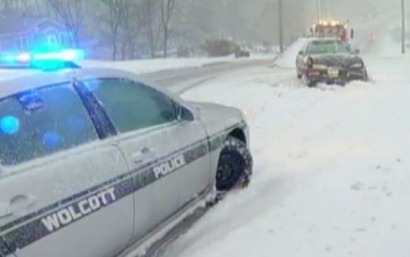
But in the final days of the campaign, as hurricane Sandy wreaked havoc across New York City and the Jersey Shore, views toward global warming finally seemed to matter.
In recent years, renewable energy proponents have built momentum for new projects based, in part, on growing concern over climate change. Unfortunately, as the U.S. has struggled to recover from a crippling recession, global warming has fallen off the public radar screen, and the pace of new renewable energy projects has slowed. A multi-million-dollar election-year ad campaign sponsored by the American Petroleum Institute, Vote4Energy, has helped persuade the public that oil and natural gas supplies are abundant and will remain a key part of our energy sector for decades to come.
Thus, just days before the presidential election, New York City Mayor Michael Bloomberg’s endorsement of Barack Obama caught many by surprise, not so much by who he endorsed as by why: climate change! In an op-ed piece on Bloomberg.com, “A Vote for a President to Lead on Climate Change,” published three days after Sandy came ashore, the Mayor explains:
Our climate is changing. And while the increase in extreme weather we have experienced in New York City and around the world may or may not be the result of it, the risk that it might be -- given this week’s devastation -- should compel all elected leaders to take immediate action.
Of course, there were other issues at play in Bloomberg’s endorsement (a woman’s right to choose, marriage equality, health care reform), but his concern over climate change was genuine. He wrote, “When I step into the voting booth, I think about the world I want to leave my two daughters, and the values that are required to guide us there … I want our president to place scientific evidence and risk management above electoral politics.”
Following Bloomberg’s statement, the airwaves were filled, for the first time in years, with expert opinions about the reality of climate change and the need for urgent action. President Obama’s work to improve the energy-efficiency of cars and buildings and to reduce carbon emissions was highlighted, as was Governor Romney’s scorn of the President’s actions.
(By clicking HERE, you can view a video from The Weather Channel about whether climate change played a role in hurricane Sandy.)
Outside of the political arena, the American public’s acceptance of climate change science remained strong during the campaign season, despite the misinformation spread by climate change deniers. For example, an October 2012 public opinion survey by the Pew Research Center found that 67% of Americans believe there is solid evidence that the earth’s average temperature has been getting warmer over the past few decades, and 42% believe the warming is mostly caused by human activity like the burning of fossil fuels. Surprisingly, it was older Americans in the Pew survey who appeared to be most skeptical: just 28% of those 65 and older believe global warming is mostly due to human activity, and only 29% believe global warming is a very serious problem.
With the election behind us, and with many climate change skeptics still in political office, it remains to be seen what progress America can make in cutting carbon emissions and promoting renewable energy. Perhaps the extensive power outages, flooded subways, and devastated coastal areas caused by Sandy will be enough to keep the climate change conversation going. Regardless, it is just a matter of time before another superstorm forms in the Atlantic, and next time it could be even worse. How many more superstorms, tornado outbreaks, derechos, and droughts will it take to put renewable energy at the forefront of U.S. energy policy?
Ed. Note: The day after Richard Crume wrote this piece, a powerful Nor’easter formed off the U.S. Mid-Atlantic coast and moved northeast, bringing strong winds and power outages, coastal flooding, freezing temperatures, and even snow to areas still reeling from Sandy.

